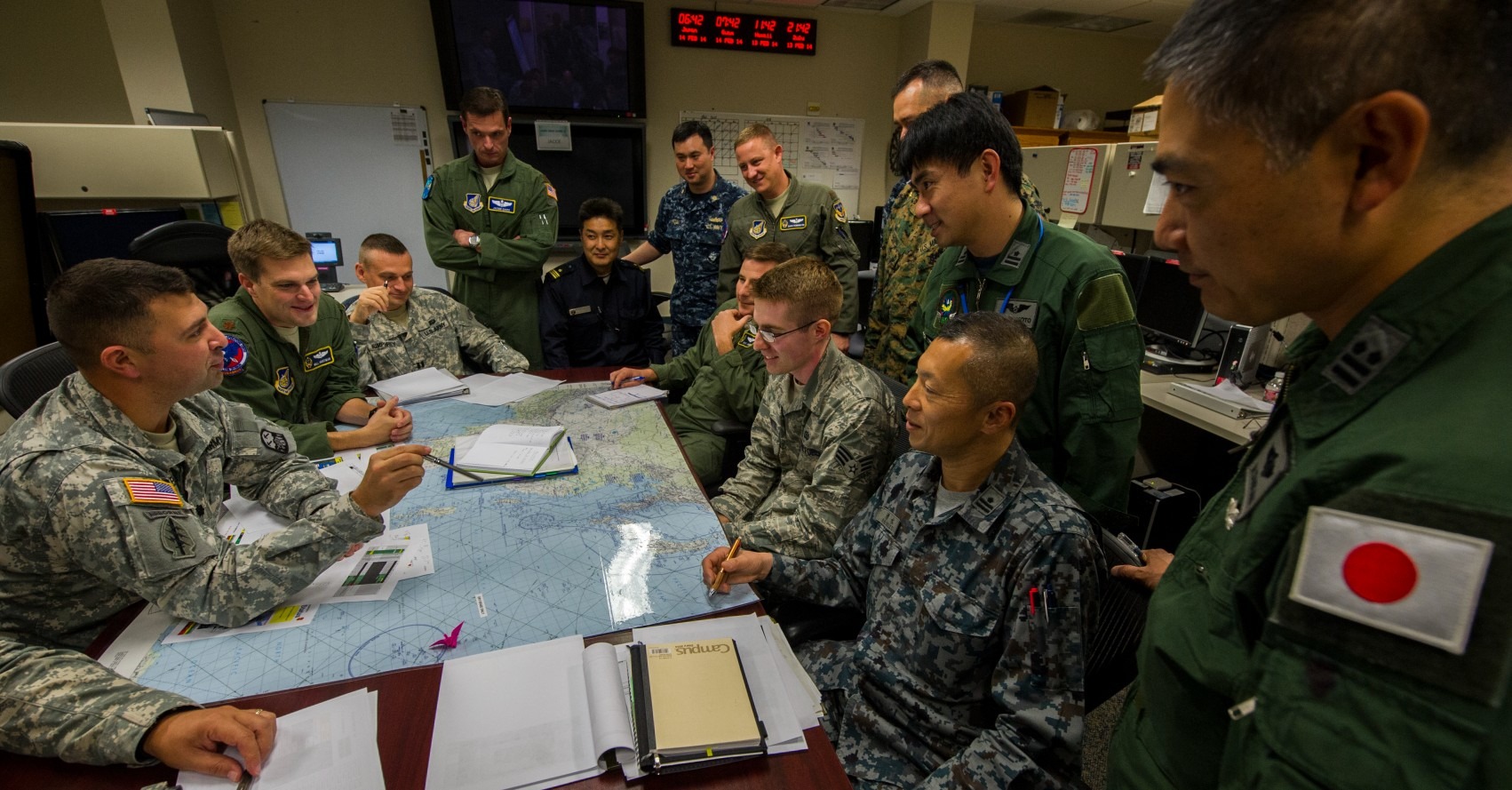Is Japan’s Military Ready for War?

By Richard Milner
Staff Writer
23/2/2020

Japan’s defeat in WWII ended its bid for supremacy in Asia. Since then, its military has been circumscribed by a Constitution drafted in 1946 (largely by officers in the US army) that prohibits it from having armed forces capable of engaging in warfare beyond self-defense. Today, over 70 years later, Japan is largely dependent on the United States for protection and aid in the face of military threats.
Article 9 – the section of the Constitution that limits Japanese military power – has become the subject of continuous public debate, often by political parties seeking to polarize voters, or by far-right nationalist groups driven by visions of wartime glory. Every election season, Prime Minister Shinzo Abe, a noted hawk, raises the question of whether Japan should amend Article 9 (and promptly drops the issue after the vote).
Such an amendment would presumably allow the Japanese military (known as the Self-Defense Forces (SDF)) to expand its budget and combat capabilities to be able to independently conduct offensives in conflict zones like any other military. No politician, though, has ever ventured to specify what concrete changes would actually occur as a result of altering Article 9; Abe has only gone so far as to say that any change to the Constitution would not alter Japan’s post-war identity as a pacifist nation.
For an ostensibly pacifist nation, though, Japan’s military is already very strong. The SDF currently rank 5th in the world in terms of overall power, and include an army, navy, air force, coast guard, special forces (which also act as an anti-terrorism unit), and, since 2018, an amphibious division (marines). Former Prime Minister Junichiro Koizumi even managed to wriggle through Article 9’s wording to allow the SDF to aid the United States in its occupation of Iraq in 2004 following the capture of Saddam Hussein. Otherwise, the SDF remain largely involved in international relief efforts and peacekeeping deployments.

The Type 74, the SDF’s main battle tank
Discussions of Article 9 and the Japanese military’s combat capabilities tend to escalate when neighboring countries like North Korea or China behave in a menacing way (like when North Korea conducts missile tests, or when China tries to assert its claim over the Senkaku Islands). But if Japan had to go to war, how would it fare?
Japan’s military has about 250,000 active personnel across all branches, but up to nearly 43% of the population (54 million people) could be mobilized if necessary. Japan has more military aircraft than it does ground vehicles, which makes sense for an island, and has been, bit by bit, overhauling its defensive capabilities in the sea and air (including commissioning new aircraft carriers) largely to keep up with neighboring China.

Japanese F-4 fighter jet
In terms of sheer quantity of assets, China ranks highly across the board. Its military, 2 million people-strong, is the largest in the world, and is half again bigger than the 2nd largest, India’s. Even so, China’s overall military strength is only 3rd in the world, just two ranks above Japan. But, China’s population and economy are still growing, whilst Japan’s are shrinking. China has been investing heavily in its navy and air force, and the capabilities of its assets are starting to rival, if not surpass, Japan’s (even though Japanese weaponry is largely based on US designs).
China’s population and economy are still growing, whilst Japan’s are shrinking.
By contrast, North Korea’s military, despite consuming up to a quarter of its GDP, only ranks 25th in the world, under fellow Asian countries like Thailand, Vietnam, and Indonesia. North Korea has a standing army of approximately 1.2 million, a decent number of aircraft, an absurd amount of tanks (over 6,000, though still less than the US and Russia), but is utterly lacking in large-scale naval power (it’s ranked dead last in a Global Firepower index when it comes to destroyers and aircraft carriers because it has none). (It does, however, have nuclear weapons.)
Of course, none of Japan’s military capabilities matter if it can’t actually take up arms in the event of a conflict. An analysis of the SDF is not simply a matter of pitting fighter jets against anti-aircraft guns, or anti-material rifles against anti-personnel weaponry, or how quickly troops can be mobilized. Japan might be militarily capable when looking at hardware and quantifiable metrics, but it is politically hamstrung. Under the 1951 Treaty of Mutual Cooperation and Security between the United States and Japan, any attack on Japan will provoke a response by the United States, which has the world’s most powerful military. However, at the same time, Japanese soldiers must ensure any action they take falls under the allowable military action outlined in the treaty, and in Article 9.

US military and SDF personnel at a missile defense strategy exercise
Former Japanese Lieutenant General Noboru Yamaguchi described the frustration shown by American troops when cooperating with the SDF, as no action could be simple or spontaneous. All decisions undertaken by the military are embroiled in complex legal interpretations: Does the action constitute self-defense, or does it jump the proverbial gun? Is it being used in lieu of negotiation to settle an international dispute? Is it absolutely necessary to the preservation of life?
Of course, most offensive weapons can also be used defensively, and Japan’s military has taken advantage of that to build and acquire a formidable fighting force. However, if Article 9 was amended, this would give the military access to more overtly offensive weapons like bomber jets, intercontinental ballistic missiles, and maybe even nuclear weapons. Such an amendment would also likely prompt a change in its mentality, making it more independent and less reliant on the US.
If Japan went to war with North Korea or China, the sea and the sky would be the main theatres of combat, and strategies would be largely determined by the geography of the region and Japan’s position as an island nation on the easternmost edge of the Asia-Pacific. Both the US and South Korea would likely be pulled in to help Japan if it was attacked. If it was a war with North Korea, any tensions between South Korea and Japan would likely be set aside in the face of the mutual threat Pyongyang poses. South Korea, located in between China and western Japan, would also present an obstacle for Beijing in the event of a conflict.
In the event of a war with North Korea or China, Japan’s best strategy would likely be to play a defensive game along its coast, keeping ground units from landing. If a large ground force, like the People’s Liberation Army, managed to reach the Japanese mainland, the SDF would quickly be overrun.
In the event of a war with North Korea or China, Japan’s best strategy would likely be to play a defensive game along its coast, keeping ground units from landing.
Even if head-on dogfights were necessary, Japan would rather not carelessly toss away valuable resources like jets and carriers. SDF ground troops would be kept in reserve to protect Japanese soil if enemy ground troops managed to land, or to engage in activities like civilian evacuations, while strike forces (especially marines and special forces) would seek to destroy enemy combat capabilities by taking out high-value targets. With these tactics, and adequate support from the US and South Korea, Japan should be able to hold out in an extended conflict, even with its limited natural resources and relatively stagnant economy.
Without such support, though, Japan’s prospects in a war are far more precarious. Japan is likely to be able to count on such support in the foreseeable future, though. Even though America under Trump is a far less reliable ally, it knows it can’t afford to allow North Korea or China to take the Japanese island chain. Self interest, if not principle, will force its hand.
